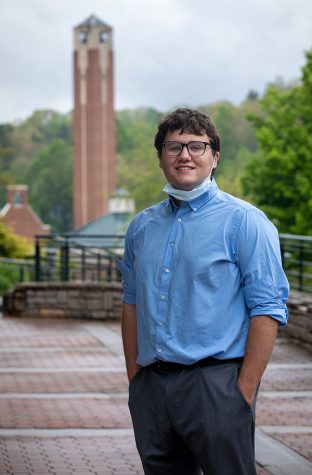“BREAKING: Christianity ruled illegal,” “BREAKING: Malia Obama arrested with a gang of thugs in Chicago” and “BREAKING: Trump makes one phone call—Stephen Colbert fired!” were headlines on Red Info, a fake news site, according to Politico.
Fake news has been talked about a lot by high profile people, the president and has been talked about in different news agencies quite a bit.
Merriam-Webster recently published an article explaining the history of the word “fake news” and why it is not in their dictionary.
The term “fake news” has been used since the 1890s to classify what fake news is: false news. Merriam-Webster is not publishing it in their dictionary because it is a self-explanatory compound noun.
Fake news, as Merriam-Webster puts it, is simply “news, material reported in a newspaper or news periodical or on a newscast, that is fake, false, counterfeit.”
During and since the 2016 election, fake news has been a hot topic. Then presidential candidate Donald Trump called media that were reporting negatively on him fake news.
Trump repeated a confirmed fake news story about billionaire George Soros paying protesters to disrupt Republican rallies. That was fact checked by multiple organizations to be false. He was not the only one to repeat the fake news claims.
Trump’s former national security advisor, Michael Flynn, repeated a report that Democrats wanted to impose Sharia law in Florida. He also retweeted a fake news story of supposed democrats with sex crimes against children.
All those stories were false but it did not stop government officials and public figures from spreading them.
Spreading fake news destroys the trust in the media. According to the Gallup poll of trust in media for 2016, only 32 percent of Americans trust the media.
Fake news is a problem. With the president denouncing major media organizations as fake news and asking why there is no investigation into “the Fake News Networks in OUR country,” it is important for journalists to write accurate news.
On Oct. 11, Trump tweeted out that “network news has become so partisan, distorted and fake that licenses must be challenged and, if appropriate, revoked. Not fair to public!”
A government official mentioning revoking a media license counterattacks the First Amendment in the constitution that says “congress shall make no law respecting an establishment of religion, or prohibiting the free exercise thereof; or abridging the freedom of speech, or of the press; or the right of the people peaceably to assemble, and to petition the Government for a redress of grievances.”
With the president of the United States talking about going against the First Amendment, news agencies have to work harder than ever to be accurate and fair.
CBS News published news of Tom Petty’s death when in reality he was still clinging to life. That misstep can cause CBS News to lose credibility, not just for them, but for the media in general.
Not only can fake news cause more mistrust in the media, it can be dangerous.
When WikiLeaks published emails from the Hillary Clinton campaign, fake news stories sprang up.
Notably one about a pizzeria.
The claim came from John Podesta’s, Clinton’s campaign manager, email that talked about pizza for an event. That snowballed into a conspiracy about a child sex ring in the basement of Comet Ping Pong Pizzeria.
On Dec. 4, 2016, a North Carolina man, Edgar Welch, 28, fired an assault rifle in the pizzeria. He claimed told a reporter from the New York Times that he “just wanted to do some good and went about it the wrong way” and that “I regret how I handled the situation.”
He wanted to investigate the claims of a child sex ring being run in the basement. He pleaded guilty to federal and local weapons charges and also agreed to pay for the damages he caused, according to NBC News.
On June 22, Welch was sentenced to four years in prison.
Fake news is dangerous. Spreading false information in the guise of real news creates situations where people are put in danger.
Spotting fake news can be tricky but with the right questions it can be easy to tell real from fake.
NPR wrote an article in December 2016 called “A reader’s guide to facts.” The article gives advice on how to spot fake news and what a reader can ask themselves to help tell.
Here are some of their tips:
Ask yourself some simple questions when reading an article. Is it very outrageous you can’t believe it? Is is so outrageous you do believe it? Does the headline match the story? Who is the news source?
Depending on the answer to these questions, the reader may be reading fake news.
If the article is so outrageous that you can’t believe it, verify and see if other news organizations are doing the same story.
Do you believe the story? Some fake news authors play to existing beliefs and wants to confirm your suspicions.
Headlines that do not match a story are very rarely published. Editors make sure headlines are of quality and make sense for the story.
If the news organization comes from a random Facebook post and you have never heard of that organization, verify. Look for information on that news organization to judge for yourself whether or not they are trustworthy and see if other news sites are doing the story.
There are many more questions a reader may ask themselves if are unsure of the story but use good judgement and verifying if unsure are key to spotting fake news.
Some big clues can also come from just what the reader can see on the website.
If a site has a .com.co after the name, that should raise some eyebrows. Sites like ABCnews.com have copiers, like abcnews.com.co, to make it look like a legitimate news source.
Another clue that can cause concerns is unnecessary capitalization and exclamation points. The AP Style Guide says “in general, avoid unnecessary capitalization.” The AP Style Guide is universally used with journalists across the country.
A lot of journalists will have some way to contact them at the end of story. At The Appalachian, we place the writer’s twitter handle at the end of every article.
If the story does not have contact information for the journalist or anything about the journalist, I recommended a different news outlet.
Using judgment when reading a news source is the only way to stop the spread of fake news. Verify the report and don’t take any news for granted.
Moss Brennan is a freshman journalism major from Durham, North Carolina. You can follow him on Twitter at @mosbren


